Hello Kirk,
I've heard about you from Dan Burkholder some time ago. I have been involved in architectural photography and currently using digital capture with DSLR, HDR and stitched HDR, QTVR. I'm wondering if you use a spherical qtvr head such as the 303SPH or the dedicated heads made by Precision to accomplish your stitching without any nodal displacement. I've been struggling with getting my DSLR capture to do what my 4x5 lenses could easily accomplish with interiors. Sorry to bother you, I didn't know how to approach this question on the blog, which I find very beneficial to the craft btw.
I'm using PT Gui for my stitching and Bracketeer for my HDR blending in batch mode. I like the HDR to be calm and frequently use it as an ambient exposure for interiors that I blend with my strobe exposures.
I'm interested in your approach of course, but understand if you have not time to spare.
best,
T
T,
Thanks for the question. No I don't use anything like a spherical qtvr head for architecture, though I do own a Nodal Ninja. Generally the problem I am tying to solve is that sometimes the field of view of a 24mm lens on a FF sensor is simply not wide enough and wider lenses give significant distortion of near objects. Many people overdo wide stitching for architecture creating images that are very distorted and don't even resemble the original architecture. So I use a 24mm Tilt/Shift lens. I shift it left for one tile of the stitch and shift it the other way for the other tile. The combined images increase the field of view by 1/2. Any more would result in a very unnatural look, which I know from experience is virtually worthless to my clients. I then use the Photomerge plugin in PS CS4 to join the images. It is a very simple and effective workflow, that produces believable images. PtGui is more than I need for my stitching. I have not tried Bracketeer, but I do use Exposure Blending in Photomatix some. I find this less effective than simply lighting a space properly to begin with or manually layering and masking two exposures (one for the interior and the other for the exterior) in PS, but sometimes useful in a space that is highly reflective and there is nowhere to hide lights.
Kirk
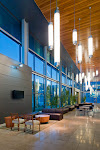


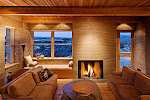

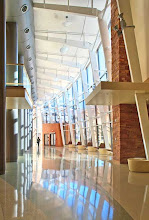
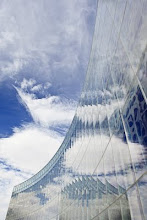
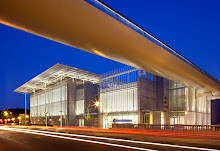




No comments:
Post a Comment